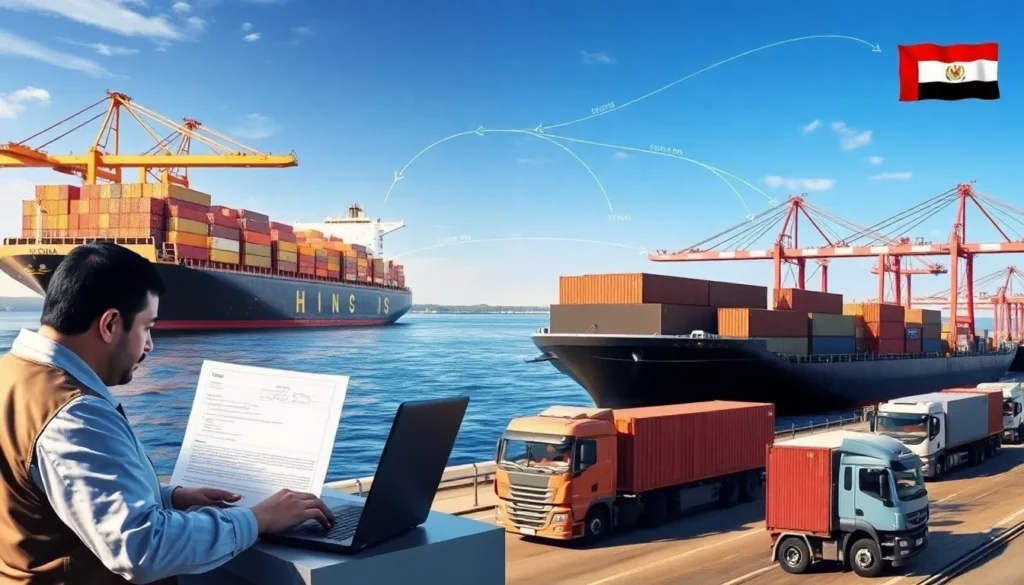Selecting the right freight forwarder from China can streamline your Egyptian import process and cut shipping costs by up to 40%. This guide walks you through every step of shipping from China to Egypt, from choosing the best transport options to mastering customs compliance. You’ll learn how to assess carrier networks, navigate Egypt’s mandatory ACI system, and partner with reliable logistics experts to ensure smooth operations.
Most Important: A dependable freight forwarder from China provides end-to-end logistics solutions, including customs clearance, strong carrier connections, and real-time shipment tracking for importers targeting Egypt.
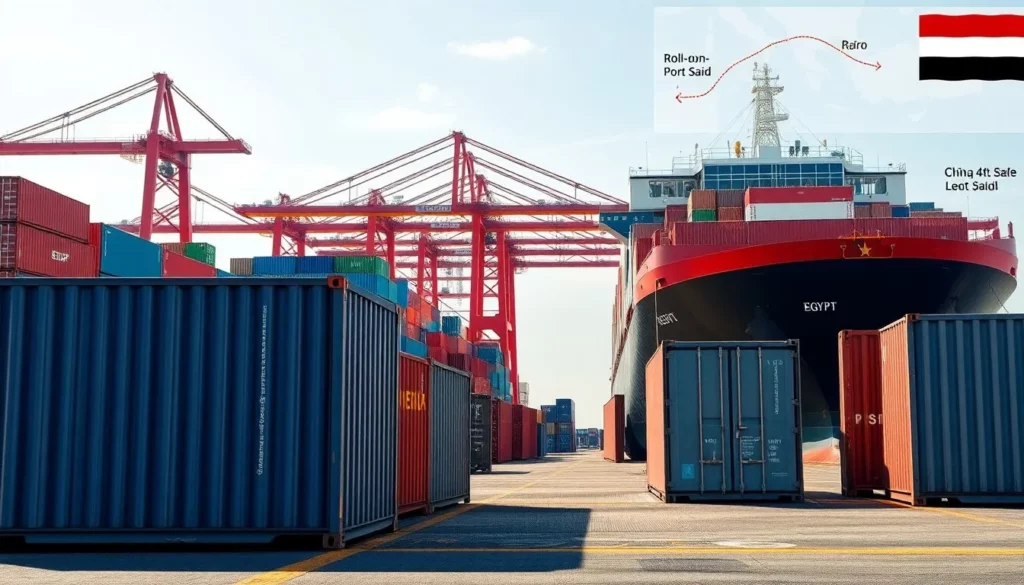
Choosing the Best Shipping Method for China-Egypt Freight
Sea Freight: The Cost-Effective Choice for Bulk Cargo
Sea freight handles over 85% of China-Egypt trade, thanks to its affordability and capacity for large shipments. Major Chinese ports like Shanghai, Shenzhen, and Ningbo link directly to Egyptian ports via Mediterranean and Red Sea routes.
Full Container Load (FCL): Ideal for Large Shipments
With FCL, you get a dedicated container (20ft, 40ft, or 40HC) for your goods, ensuring better security and quicker transit compared to shared shipments. Costs range from $3,200-$3,700 for a 20ft container and $4,400-$5,100 for a 40ft, depending on the route and season.
FCL becomes cost-effective for shipments over 15 cubic meters, as your cargo travels sealed from origin to destination, minimizing handling risks.
For Example: An Egyptian furniture importer shipping 18 CBM of tables saved 20% by switching to FCL from LCL.
Less than Container Load (LCL): Flexible for Smaller Shipments
LCL is perfect for shipments under 15 CBM, charging per cubic meter at $105-$110 on average. Your cargo shares a container with others, which adds 3-5 days for consolidation but saves significantly on costs for small volumes.
Tips: Request detailed LCL quotes to avoid hidden fees like consolidation charges.
Specialized Sea Freight: Oversized or Temperature-Sensitive Cargo
For vehicles, use Roll-on/Roll-off (RoRo) services. Break bulk handles oversized machinery, while reefer containers keep perishables like pharmaceuticals at controlled temperatures. These require early booking and precise cargo details for proper handling.
Important warnings: Always provide accurate dimensions for oversized cargo to avoid delays or extra costs.
Transit Times & Routes: From Shanghai to Alexandria
Direct routes from Shanghai to Port Said take 26-29 days, while transshipment routes extend to 36-45 days via the Suez Canal, which carries 60% of China’s exports to Europe. Shanghai, the world’s busiest port, leads in volume, followed by Shenzhen and Ningbo. Weather or congestion can add 2-7 days.
Key takeaways: Opt for direct routes when possible to reduce transit time and handling risks.
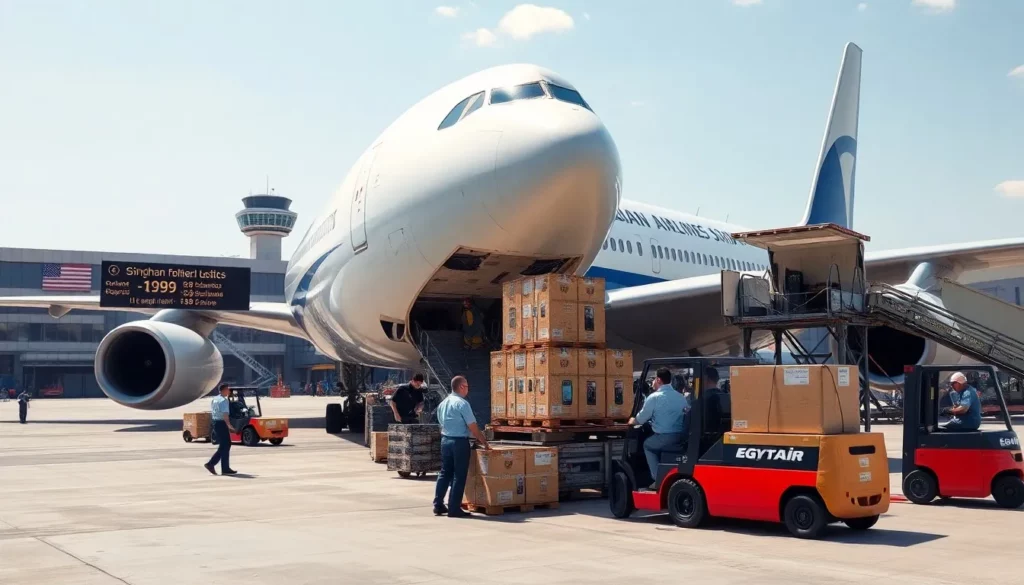
Air Freight: Speed for High-Value Goods
Air freight suits urgent, high-value, or time-sensitive shipments, with rates from $3.00-$8.00 per kilogram based on weight and route.
Standard Air Cargo: Fast Delivery for Commercial Shipments
Standard air freight offers 5-10 day port-to-port delivery for shipments over 45kg. Rates drop from $7.00/kg for 45kg+ to $4.35/kg for 1000kg+. Direct flights from Beijing, Shanghai, or Guangzhou to Cairo clear customs in 2-3 days.
An Egyptian electronics retailer used standard air freight to rush 200kg of smartphones to market in 7 days, avoiding stockouts.
Express Air Freight: Door-to-Door Speed
Express services via DHL, FedEx, or UPS deliver in 3-7 days, including customs clearance. Rates start at $16.05/kg (DHL) or $9.93/kg (UPS) for 100kg+. These are ideal for samples or urgent documents.
Best practices: Use express for small, critical shipments to save time.
Cost Breakdown: Understanding Chargeable Weight
Air freight costs hinge on chargeable weight—the higher of actual or volumetric weight (L×W×H ÷ 6000 in cm). Dense cargo is billed by actual weight; bulky items by volumetric weight. Optimize packaging to lower costs.
Tips: Compress packaging for lightweight goods to reduce volumetric charges.
Major Air Routes: From China to Cairo
Shanghai Pudong, Shenzhen, and Guangzhou airports feed Cairo International, Egypt’s primary air hub. Sichuan Airlines and EgyptAir offer direct flights, with capacity varying by season.
Key takeaways: Choose direct flights for faster delivery and fewer handling risks.
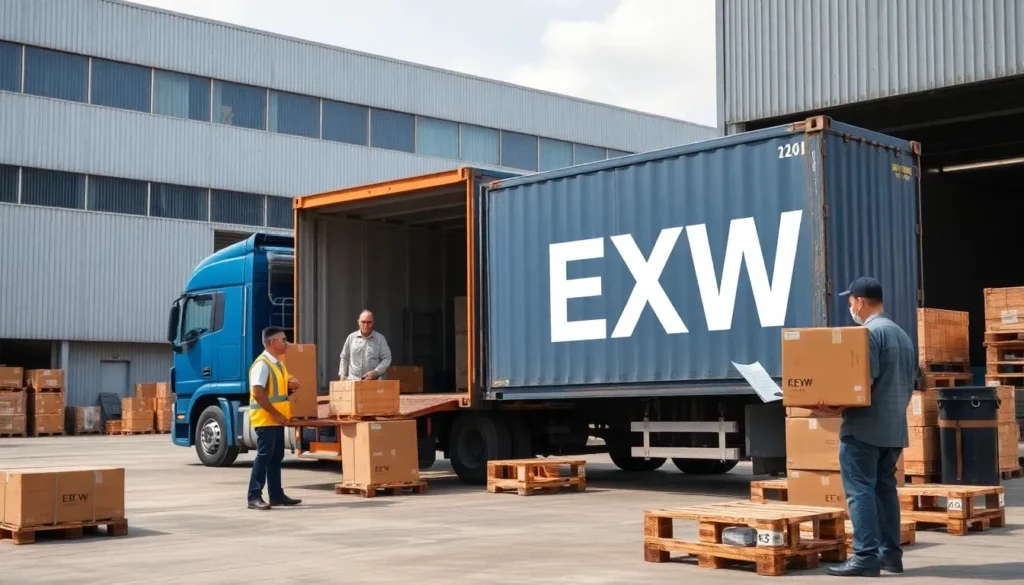
Incoterms: Defining Your Responsibilities
Maximum Buyer Control: You Manage Logistics
EXW (Ex Works): Full Responsibility from Factory
With EXW, you handle all logistics from the supplier’s factory, including export clearance and transport. This offers the lowest purchase price but requires logistics expertise in China.
Important warnings: EXW demands a strong local presence to avoid export delays.
FCA (Free Carrier): Balanced Control
FCA has the supplier deliver to your chosen forwarder in China, who handles export clearance. You manage international transport, gaining flexibility without navigating Chinese export rules.
Best practices: An Egyptian importer used FCA to select a cost-effective carrier, saving 15% on freight.
FOB (Free On Board): The B2B Standard
FOB, common in China-Egypt trade, shifts responsibility to you once goods are loaded onto the vessel. Suppliers cover export clearance and port delivery, balancing control and ease.
Best practices: Use FOB for most shipments to simplify Chinese logistics.
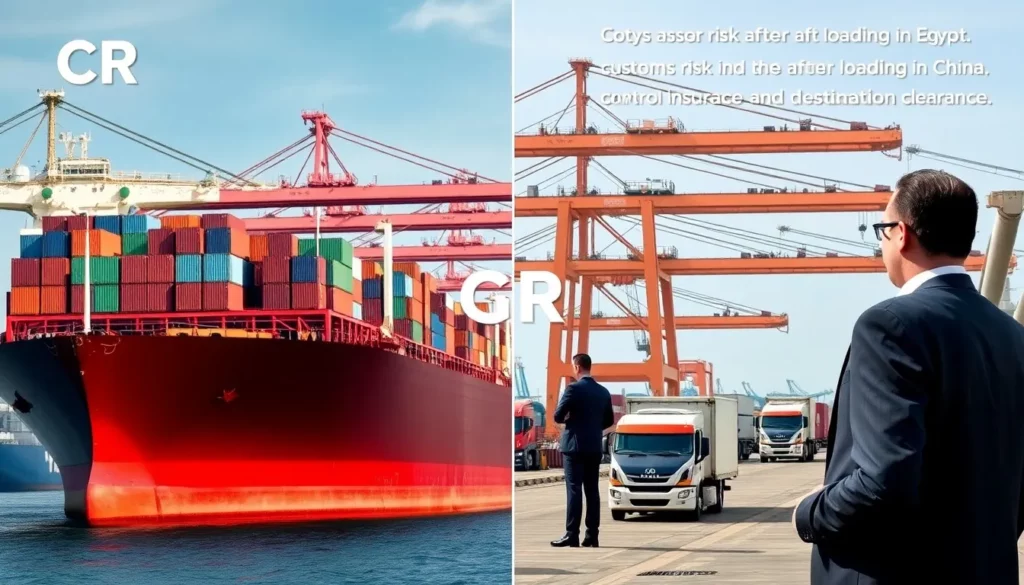
Increased Seller Responsibility: Supplier Handles Freight
CFR (Cost and Freight): Freight Covered, Risk Yours
CFR requires suppliers to pay ocean freight to Egypt, but you assume risk once goods are loaded in China. You control insurance and destination clearance.
Tips: Secure your own insurance with CFR for better coverage.
CIF (Cost, Insurance, Freight): Includes Basic Insurance
CIF adds minimum insurance (Institute Cargo Clause C) to CFR. Suppliers arrange freight and basic coverage, but you handle import clearance. Upgrade insurance for high-value goods.
Important warnings: CIF’s minimal insurance may not cover total loss.
Maximum Buyer Convenience: Supplier Manages Most
DAP (Delivered at Place): Door-to-Door, You Clear Customs
DAP delivers goods to your Egyptian location, with suppliers managing all transport. You handle import clearance and duties, retaining control over customs costs.
Key takeaways: DAP suits complex shipments needing specialized routing.
DDP (Delivered Duty Paid): Hands-Off Option
DDP has suppliers manage everything, including Egyptian duties and clearance. Convenient but costly due to markups, it’s best for small, high-value shipments.
Tips: Compare DDP costs against managing clearance yourself for savings.
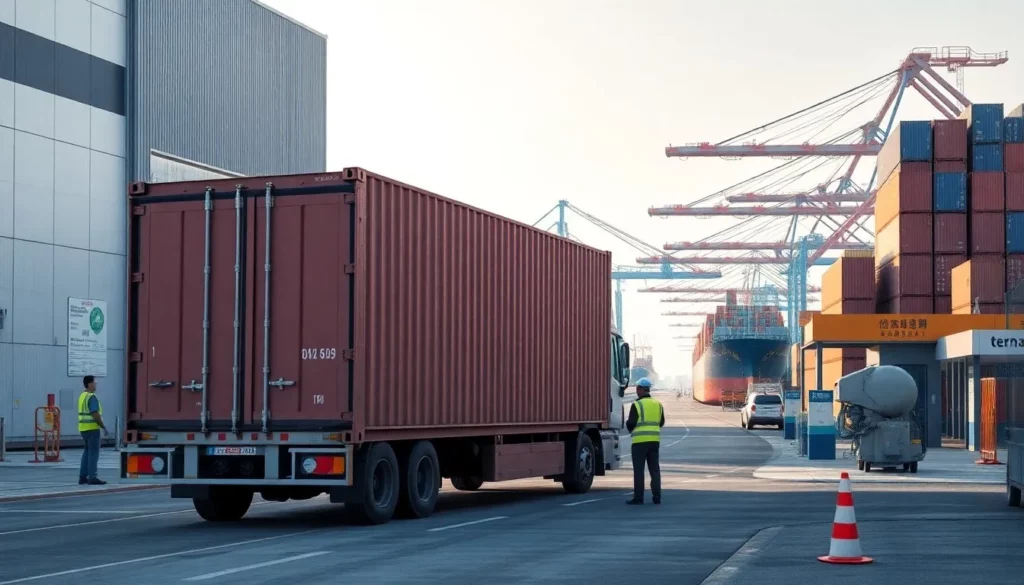
Total Landed Cost: Breaking Down China-Egypt Shipping Expenses
Origin Charges in China
Export Haulage: Factory to Port
Trucking costs from factory to port range from $200-$800 per container, depending on distance. Shanghai pickups are cheaper; inland cities like Yiwu cost more. Peak seasons like Chinese New Year add 15-25% surcharges.
Best practices: Get detailed haulage quotes to budget accurately.
Terminal Handling Charges (THC): Port Fees
THC at Chinese ports costs $140-$180 per TEU, covering container handling and documentation. Air freight terminals charge $0.50-$1.20/kg based on weight.
Key takeaways: Factor THC into quotes for true cost comparisons.
Export Customs Clearance: Filing Fees
Export clearance in China costs $80-$150 per shipment for documentation and permits. Complex cargo may incur higher fees for additional inspections.
Tips: Ensure your forwarder verifies export compliance to avoid delays.
Documentation Fees: Bill of Lading or Air Waybill
Bills of Lading cost $80-$120; Air Waybills $50-$80. Extra fees apply for amendments or rush processing. Electronic documents can save time and money.
Important warnings: Review documents for accuracy to prevent customs issues.
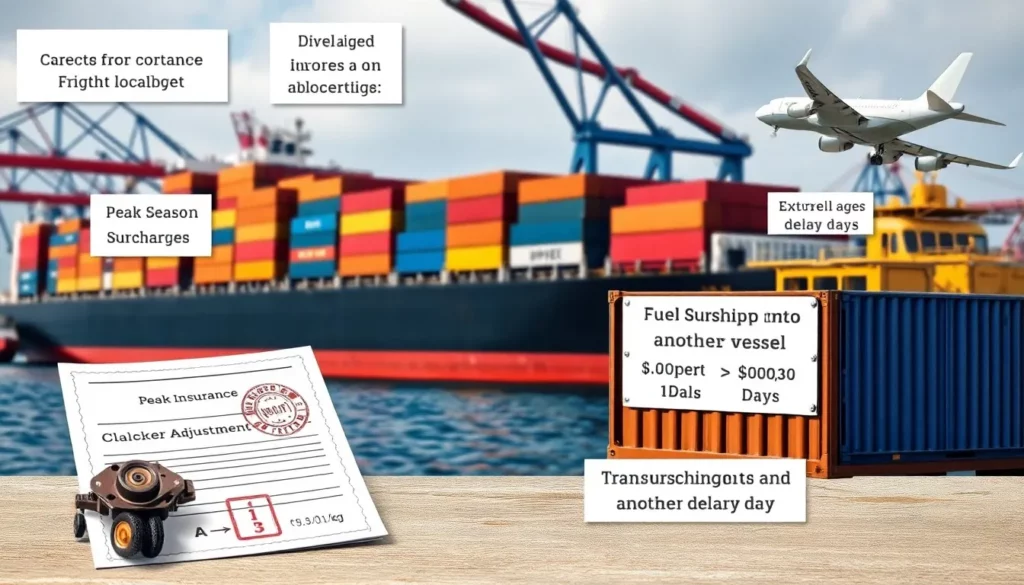
Main Freight and In-Transit Charges
Freight Rates: Market and Seasonal Impacts
Ocean freight rates fluctuate 20-40% seasonally, with Peak Season Surcharges (PSS) of $200-$500 per container from August to October. Bunker Adjustment Factors (BAF) add $50-$150 based on fuel prices. Air freight fuel surcharges range from $0.50-$1.00/kg.
Best practices: Lock in long-term contracts for rate stability.
Cargo Insurance: Protecting Your Goods
Insurance premiums cost 0.1%-0.5% of CIF value, varying by cargo type. Institute Cargo Clause A offers “all-risk” coverage; Clause C covers basic perils. Insure at least 110% of CIF value.
For Example: An Egyptian importer avoided a $50,000 loss by insuring machinery with Clause A after a storm damaged cargo.
Transshipment Fees: Extra Costs for Indirect Routes
Transshipment adds $150-$300 per container and 5-10 days. Air freight transshipments are often included in rates. Choose direct routes to minimize fees and risks.
Key takeaways: Prioritize direct routing for cost and time savings.
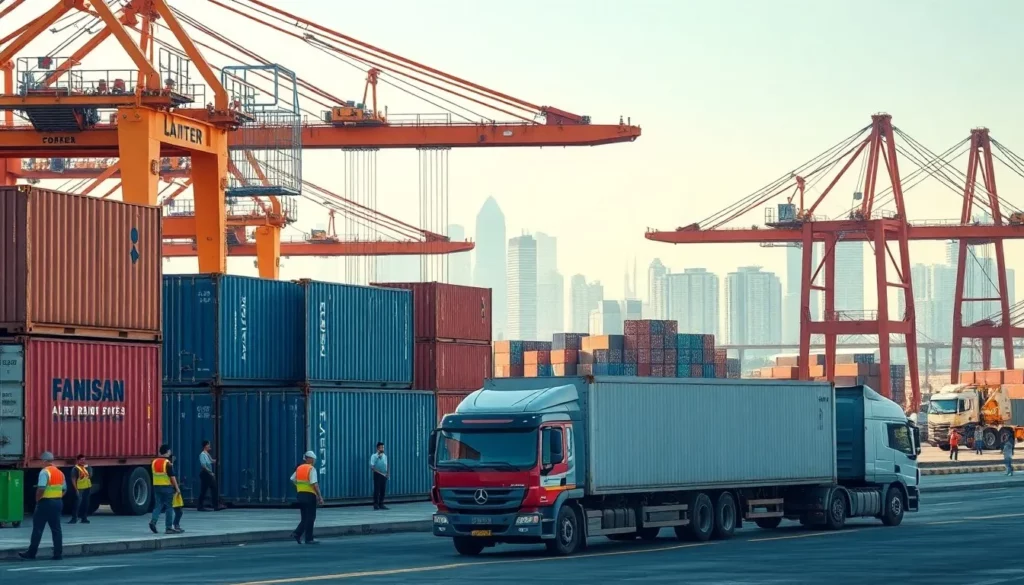
Destination Charges in Egypt
Terminal Handling & Port Fees: Arrival Costs
Egyptian ports charge $180-$250 per container; Cairo air terminals $0.80-$1.50/kg. Fees cover handling, security, and customs processing.
Tips: Confirm destination fees upfront to avoid surprises.
Nafeza & ACI Filing Fees: Import Declaration Costs
ACI filings via Nafeza cost $50-$100 per shipment. Mandatory since October 2021, filings take 48 hours to process, with three-month validity. Non-compliance doubles fees plus demurrage.
Important warnings: Submit ACI early to avoid penalties.
Customs Brokerage Fees: Professional Clearance
Egyptian brokers charge $200-$500 per shipment, depending on complexity. Fees rise for inspections or expedited clearance. Choose brokers experienced in your goods.
Best practices: Hire brokers familiar with your commodity for faster clearance.
Import Duties & Taxes: Government Levies
Duties range from 0%-30% of CIF value by HS code; VAT is 14% on duty-inclusive value. Additional fees like development taxes (1%-5%) may apply.
Key takeaways: Accurate HS codes ensure correct duty calculations.
Inland Haulage: Final Delivery
Delivery from Egyptian ports to cities costs $300-$800 per container; air cargo delivery $1.50-$3.00/kg. Cairo deliveries from Alexandria average $400-$600.
Tips: Plan delivery logistics early for smooth final-mile execution.
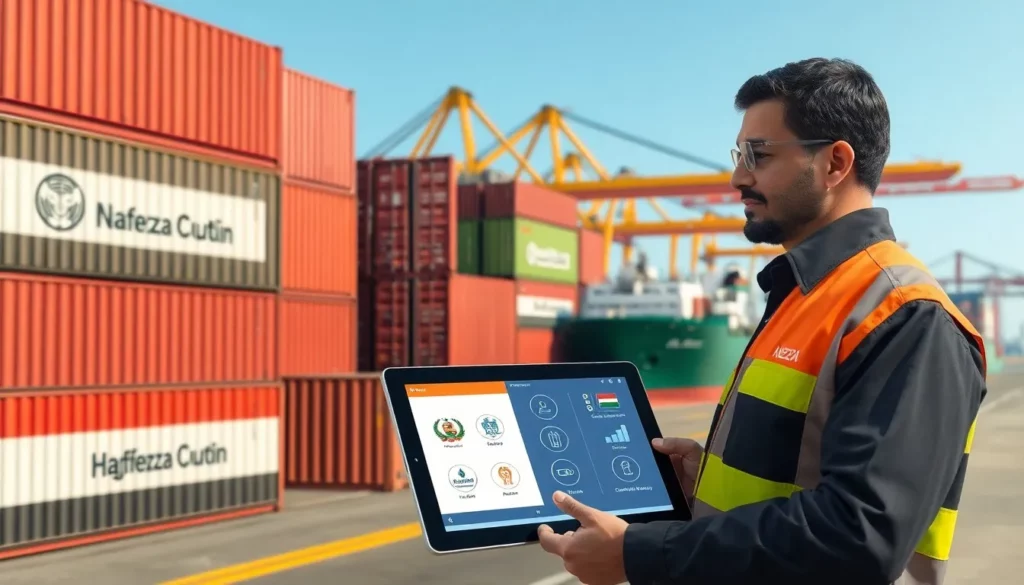
Egyptian Customs and Duties: Your Strategic Guide
Egypt’s Import Regulations
Governing Bodies: Who Oversees Imports
The Egyptian Customs Authority, under the Ministry of Finance, enforces customs law 207/2020. Other ministries like health or agriculture issue permits for specific goods. The General Organization for Export and Import Control (GOEIC) handles restricted item licenses.
Key takeaways: Identify required permits early to avoid delays.
Nafeza Platform: Egypt’s Single Window
Nafeza, operational since April 2021, integrates customs and regulatory agencies digitally. Managed by Misr Technology Services, it uses CargoX for blockchain document transfers, cutting release times from 29 to 9 days and compliance costs from $600 to $165.
Best practices: Register on Nafeza promptly to streamline filings.
Advance Cargo Information (ACI): Pre-Declaration Basics
ACI mandates cargo data submission 48 hours before departure, enabling risk assessment and faster clearance. Over 1,100,000 documents have been processed, serving 75,000+ customers. Non-compliance risks cargo return and penalties.
Important warnings: Ensure ACI filings are complete to avoid rejections.

Calculating Import Duties and Taxes
Step 1: CIF Value Calculation
CIF value = commercial invoice + freight + insurance costs. Accurate valuation prevents penalties for undervaluation, which customs may adjust based on market prices.
Tips: Keep detailed cost records to justify CIF values.
Step 2: HS Code Classification
HS codes dictate duty rates and permit needs. Egypt uses the international Harmonized System with local variations. Incorrect codes trigger fines or reclassification.
Best practices: Use a classification specialist for accuracy.
Step 3: Primary Taxes
Apply the HS code’s duty rate (0%-30%) to CIF value, then add 14% VAT on the duty-inclusive total. Trade agreements may reduce duties with proper documentation.
Key takeaways: Verify trade agreement eligibility for savings.
Step 4: Additional Taxes
Development fees (1%-5%), excise taxes (10%-200%), or special levies may apply to specific goods like luxury items or tobacco. Identify these during planning.
Important warnings: Misclassifying goods can lead to unexpected levies.
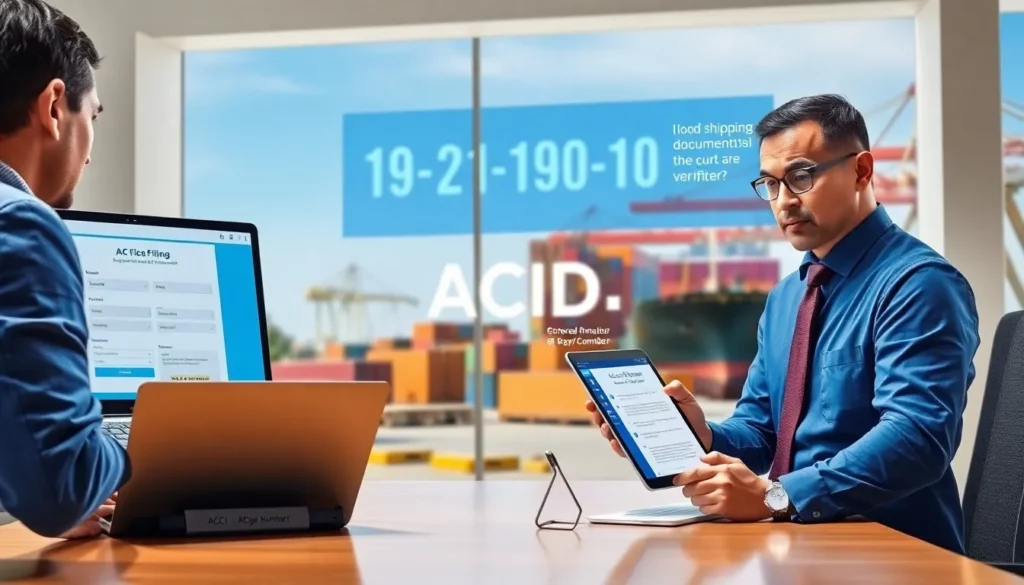
ACI Filing Process
Step-by-Step for Importers
Register on Nafeza with your business credentials and secure an E-Token from MCDR or Egypt Trust. Submit cargo details to receive an ACID number within 48 hours, valid for three months.
Tips: Start registration early to ensure timely filings.
Supplier Actions on CargoX
Your Chinese supplier registers on CargoX to upload documents with the ACID number before departure. These link to Nafeza for your verification.
Key takeaways: Coordinate with suppliers for timely document submission.
Obtaining the ACID Number
The 19-digit ACID number identifies your shipment. Customs reviews applications in 48 hours, rejecting restricted goods or incomplete data. Include the ACID on all documents.
Important warnings: Missing ACID numbers halt cargo loading.
Avoiding Common Errors
Errors like incorrect HS codes or missing exporter data cause rejections. Review documents thoroughly with your forwarder and supplier to ensure consistency.
Best practices: Double-check ACI data before submission.
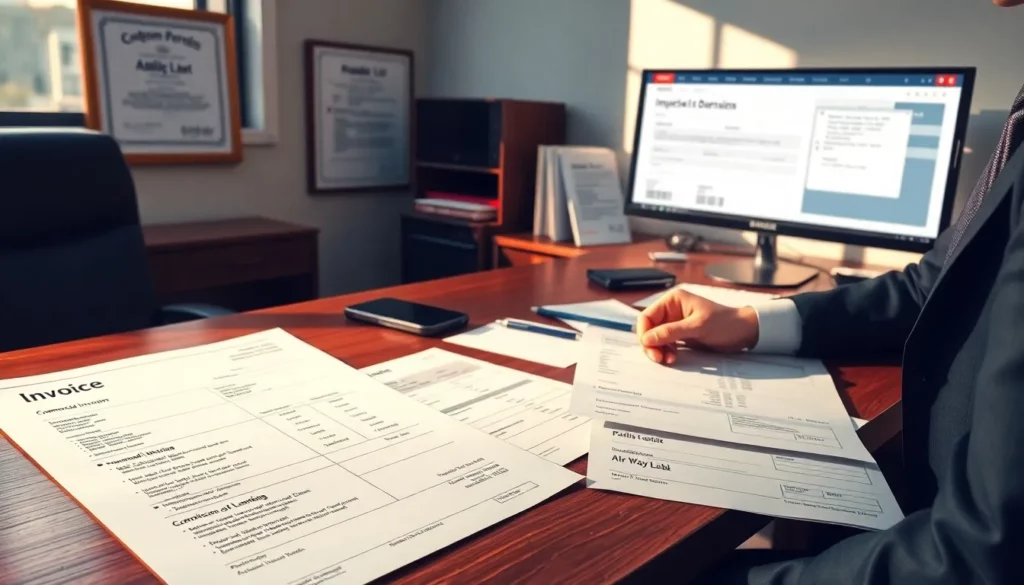
Essential Customs Documents
Commercial Invoice
Include detailed product descriptions, values, Incoterms, and the ACID number. Accurate invoices prevent valuation disputes during clearance.
Tips: Specify brands and models for clarity.
Packing List
Detail package contents, weights, dimensions, and markings. This aids customs verification and efficient handling.
Key takeaways: Precise packing lists reduce inspection times.
Bill of Lading or Air Waybill
These transport documents must reference the ACID number. Original Bills of Lading are often required for release.
Important warnings: Ensure consignee details match your registration.
Certificate of Origin
Verify the manufacturing country for duty benefits. Some goods need specific origin certificates for trade agreements.
Best practices: Obtain certificates from authorized bodies.
Import Permits
Regulated goods like pharmaceuticals or electronics require permits from relevant ministries. Identify these early to avoid delays.
Tips: Work with your broker to secure permits in advance.

Cargo Insurance: Safeguarding Your Investment
Carrier Liability Limitations
Why Carriers Fall Short
Ocean carriers limit liability to $500 per package or $2/kg; airlines to $20/kg. These caps, set by international conventions, don’t cover full cargo value, leaving you exposed.
Important warnings: Relying on carrier liability risks significant losses.
Liability Limits Breakdown
Hague-Visby Rules cap ocean liability at $666.67/package or $2/kg; Montreal Convention limits airlines to $22/kg. These outdated limits underscore the need for insurance.
Key takeaways: Always purchase commercial cargo insurance.
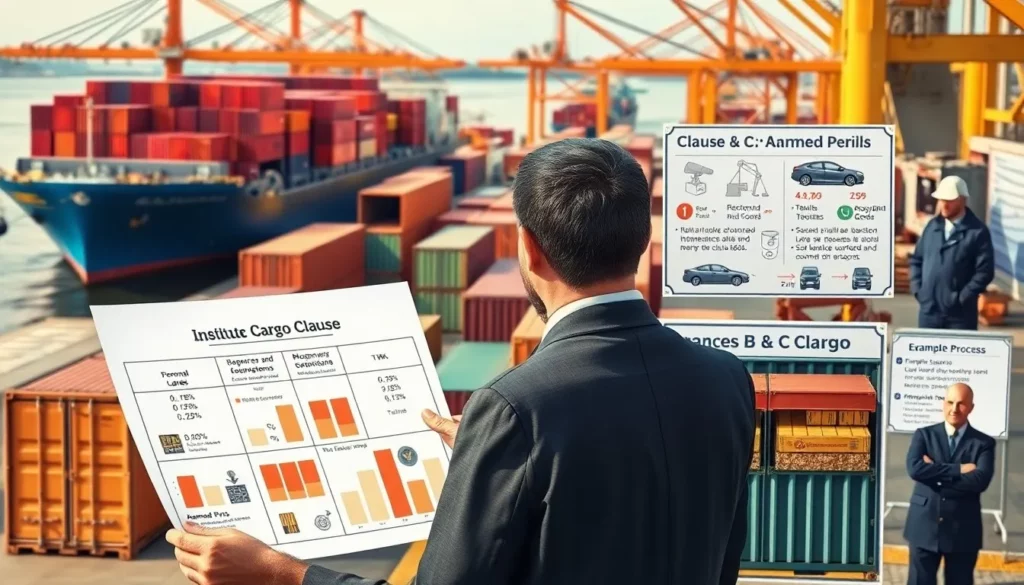
Insurance Options for Importers
Institute Cargo Clause A: All-Risk Coverage
Clause A covers all risks except specific exclusions, ideal for electronics or machinery. Premiums range from 0.15%-0.25% of insured value.
Best practices: Choose Clause A for high-value goods.
Clauses B & C: Named Perils
Clause B covers listed events like fire or collisions; Clause C is minimal, covering major casualties. These suit low-value bulk goods but offer less protection.
Tips: Assess cargo risks before opting for Clauses B or C.
Choosing the Right Coverage
High-value goods need Clause A; bulk commodities may suffice with Clause C. Consider theft risk and replacement costs when deciding.
For Example: An Egyptian textile importer saved $10,000 with Clause A after a container was stolen in transit.
Insurance Process
Calculating Insurable Value
Insure at CIF value + 10% to cover profits and duties. Some insurers mandate 110% minimums for full protection.
Key takeaways: Accurate valuation prevents under-insurance.
Filing a Claim
Notify insurers within 7 days of loss or damage. Provide Bills of Lading, invoices, and surveyor reports. Preserve damaged goods for inspection.
Best practices: Hire professional surveyors for large claims.
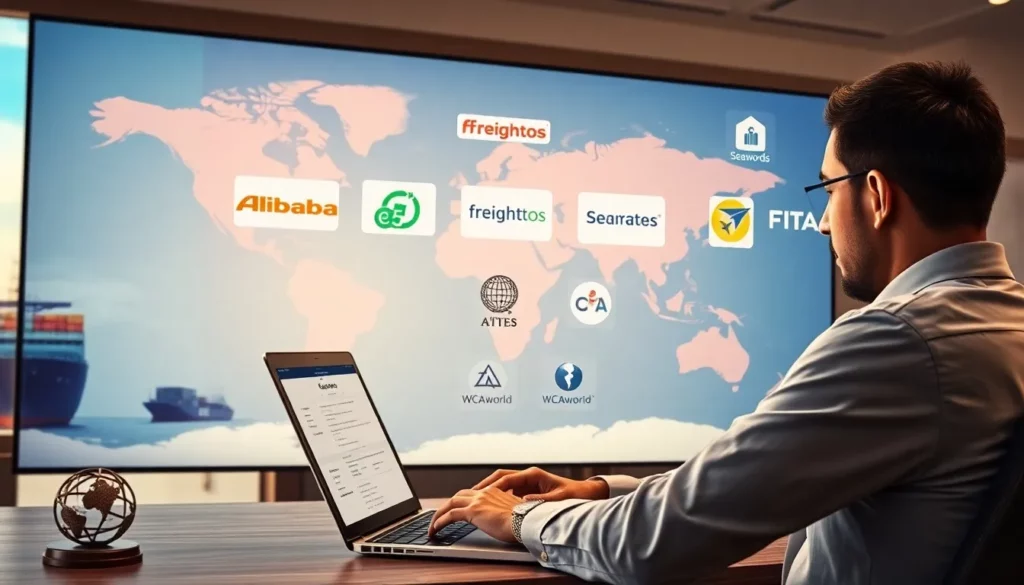
Selecting a Reliable Freight Forwarder
Where to Find Forwarders
B2B Platforms like Alibaba
Alibaba’s logistics marketplace offers quotes from verified forwarders. Check ratings and supplier ties for consolidated rates.
Tips: Use Alibaba as a starting point, then vet independently.
Freight Marketplaces: Freightos, Searates
These platforms provide instant quotes for cost comparisons. Follow up for detailed service breakdowns.
Key takeaways: Marketplaces streamline initial research.
Industry Associations: WCAworld, FIATA
Association directories list credentialed forwarders. FIATA members adhere to global standards, offering reliability.
Best practices: Verify membership with issuing bodies.
LinkedIn Networking
Search LinkedIn for China-Egypt freight specialists. Profiles highlight expertise and client feedback.
Tips: Reach out for referrals from industry contacts.
Supplier Referrals
Your Chinese supplier may recommend trusted forwarders with established relationships, potentially lowering costs.
Important warnings: Confirm recommended forwarders meet your needs.
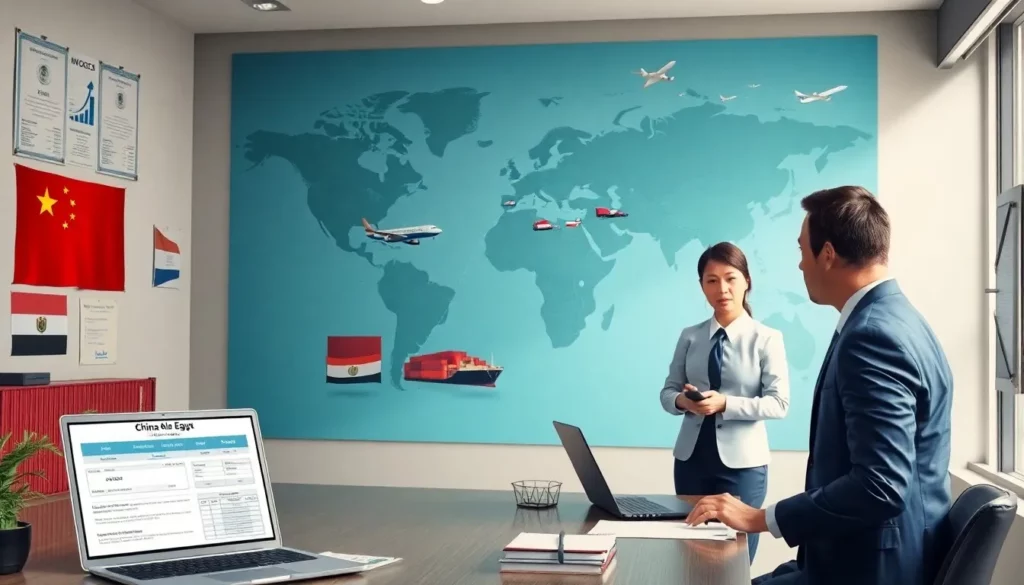
Vetting Forwarders
China-Egypt Experience
Ensure the forwarder has a dedicated China-Egypt desk with proven shipment volume. Local offices in both countries enhance coordination.
Key takeaways: Trade lane expertise drives efficiency.
ACI & Nafeza Proficiency
Verify the forwarder’s ACI filing success and Nafeza workflow. Request examples of completed filings.
Important warnings: Inexperienced forwarders risk ACI rejections.
Licenses and Certifications
Check for NVOCC registration (sea) or IATA membership (air). Validate licenses with authorities.
Best practices: Licensed forwarders reduce operational risks.
Service Capabilities
Confirm they offer your needed services (FCL, LCL, air, DDP, etc.). Comprehensive providers simplify logistics.
Tips: Match services to your cargo type and volume.
Communication Quality
Test responsiveness to inquiries. Quick, detailed replies signal reliable service.
Key takeaways: Poor initial communication predicts future issues.
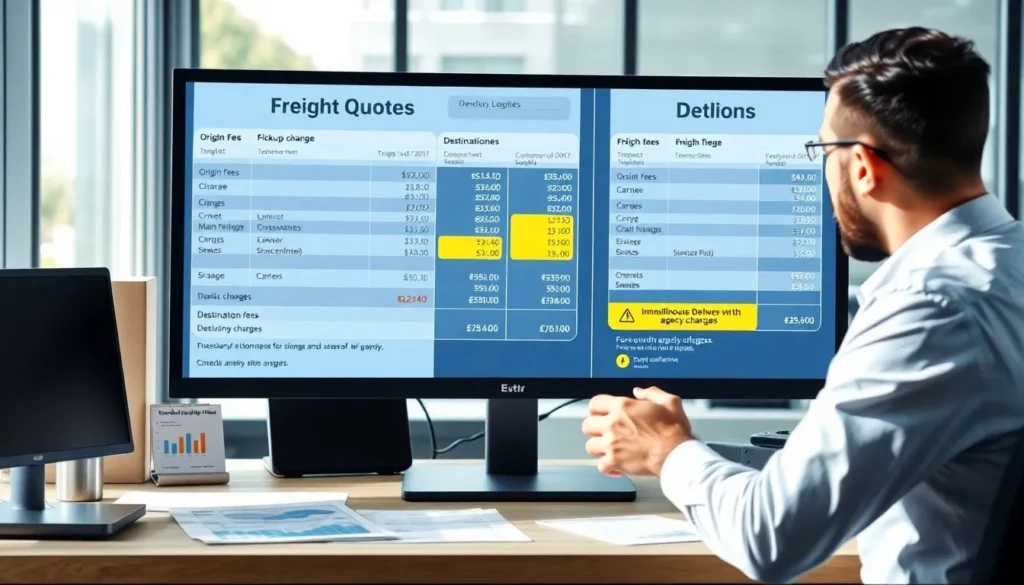
Analyzing Freight Quotes
Request All-Inclusive Quotes
Demand detailed quotes covering all fees, not just base rates, to understand total costs.
Best practices: Standardized quotes enable fair comparisons.
Quote Breakdown
Review origin fees (pickup, clearance), main freight, and destination charges (handling, delivery). Understand each component.
Tips: Clarify vague fees like “agency charges.”
Hidden Fees
Scrutinize ambiguous charges to avoid surprises. Transparent forwarders list all costs upfront.
Important warnings: Hidden fees can inflate costs significantly.
Comparing Quotes
Evaluate transit times, carriers, and services alongside price. The cheapest quote may not offer the best value.
Key takeaways: Prioritize reliability for critical shipments.

Building a Long-Term Partnership
Reviewing Contracts
Check liability, payment terms, and dispute resolution in service agreements. Negotiate unfavorable clauses.
Best practices: Seek legal review for major contracts.
Setting SOPs
Define booking, documentation, and communication protocols. Clear SOPs ensure consistency.
Tips: Establish escalation procedures for issues.
Onboarding with Suppliers
Introduce your forwarder to your supplier for seamless three-way communication. Regular coordination prevents errors.
Key takeaways: Strong communication drives efficiency.

Your Step-by-Step Import Playbook
Phase 1: Pre-Shipment Planning
Action 1: Confirm Order and Incoterm
Finalize your purchase order and agree on Incoterms like FOB Shanghai with your supplier. Document all terms clearly.
Tips: Verify supplier obligations under chosen Incoterms.
Action 2: Hire Forwarder and Broker
Engage a vetted freight forwarder and licensed Egyptian customs broker. Coordinate their roles for smooth handoffs.
Key takeaways: Early engagement streamlines processes.
Action 3: File ACI on Nafeza
Register on Nafeza and submit cargo details to obtain your ACID number within 48 hours.
Important warnings: Incomplete filings delay ACID issuance.
Action 4: Share ACID Number
Provide the ACID number to your supplier and forwarder immediately. It’s mandatory for all documents.
Best practices: Confirm receipt to ensure compliance.

Phase 2: Export Execution in China
Action 1: Coordinate Pickup and Booking
Your forwarder arranges factory pickup and books vessel or aircraft space. Confirm cargo readiness.
Tips: Book early during peak seasons for capacity.
Action 2: Prepare Export Documents
Ensure all documents include the ACID number and match ACI data. Review for accuracy.
Important warnings: Document errors cause clearance delays.
Action 3: File Export Declaration
Your forwarder handles Chinese export clearance, ensuring compliance with both countries’ rules.
Key takeaways: Professional clearance prevents detention.
Action 4: Cargo Loading and Document Issuance
Once loaded, the Bill of Lading or Air Waybill is issued. Arrange for document transfer to your broker.
Best practices: Secure original Bills of Lading for release.
Phase 3: In-Transit Compliance
Action 1: Transmit Documents via CargoX
Your supplier uploads documents to CargoX before departure, linking them to your ACI filing.
Important warnings: Late submissions risk cargo detention.
Action 2: Submit Nafeza Data
Submit customs declarations and payments 48 hours before arrival. Your broker monitors progress.
Tips: Early submission speeds up clearance.
Action 3: Track Shipment
Monitor your shipment via carrier systems and prepare for arrival logistics.
Key takeaways: Proactive tracking minimizes delays.
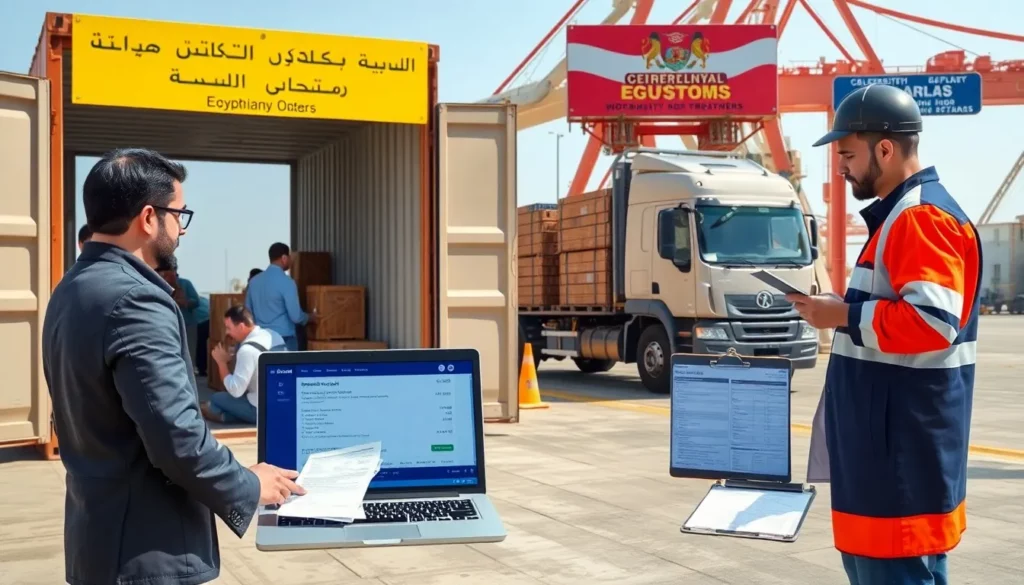
Phase 4: Customs and Delivery in Egypt
Action 1: Manage Clearance
Your broker handles inspections and clearance upon arrival. Be flexible for inspection scheduling.
Best practices: Experienced brokers expedite processes.
Action 2: Pay Duties and Taxes
Settle duties, VAT, and fees based on CIF value. Ensure payments align with ACI data.
Tips: Use bank transfers for efficient processing.
Action 3: Arrange Final Delivery
Upon customs release, your forwarder organizes delivery to your destination. Coordinate timing.
Key takeaways: Plan delivery to match your schedule.
Action 4: Inspect Goods
Inspect cargo upon arrival, documenting any issues. Sign delivery receipts to complete the process.
Important warnings: Report damage immediately for claims.

Conlusion
Partnering with an experienced freight forwarder ensures your China-Egypt shipments are cost-effective, compliant, and timely. Consult professionals to design a tailored strategy that meets your budget, timeline, and regulatory needs.
Best practices: As a forwarder, I’ve seen importers cut costs by 30% through optimized routing and ACI compliance.
Frequently Asked Questions (FAQs)
1. What’s the ACI system, and why is it mandatory?
ACI requires cargo data submission 48 hours before departure via Nafeza, enabling faster clearance (9 days vs. 29) and reducing compliance costs from $600 to $165. It’s mandatory for all Egyptian imports.
2. How do I ensure my supplier provides correct documentation?
Share clear requirements, including ACID number and VAT details. Have your forwarder review documents before shipment to align with Chinese and Egyptian rules.
3. What causes customs delays in Egypt, and how can I avoid them?
Delays stem from incomplete ACI filings, document errors, or missing permits. Submit accurate data early, use professional brokers, and verify HS codes.
4. Should a first-time importer use DDP or manage customs?
DDP is convenient for small shipments but costly. Managing customs saves money but requires expertise. Assess your shipment size and capabilities.
5. How are LCL charges calculated, and how do I avoid surprises?
LCL is priced per CBM plus shared handling fees. Request all-inclusive quotes covering all charges to ensure transparency.

